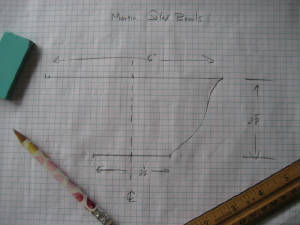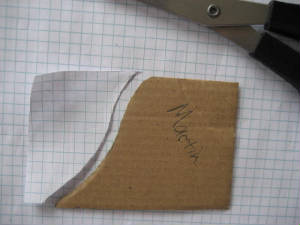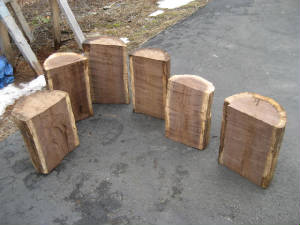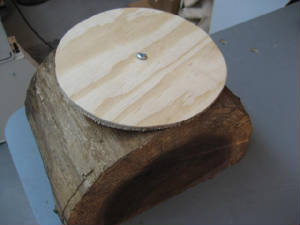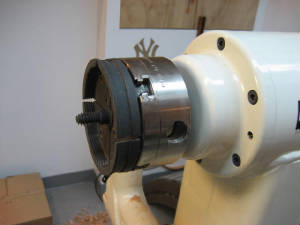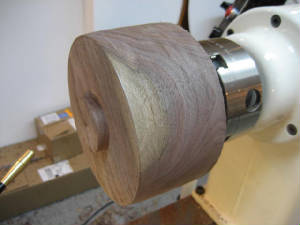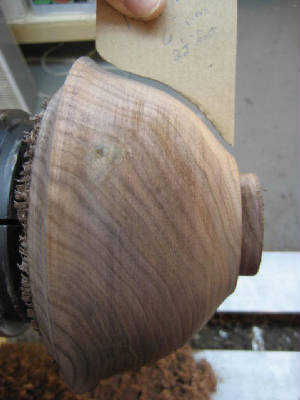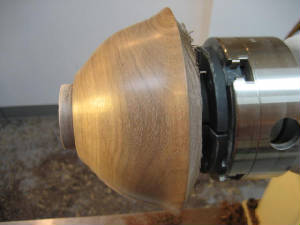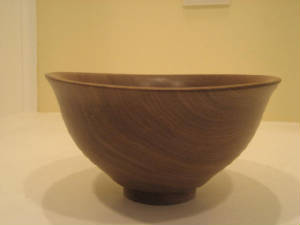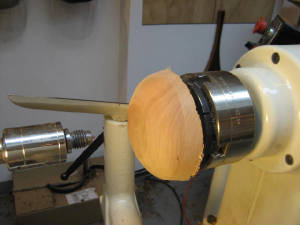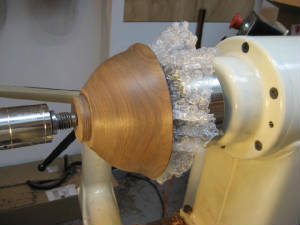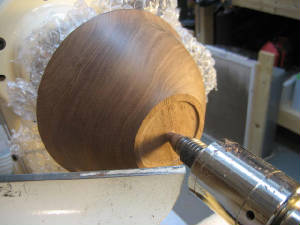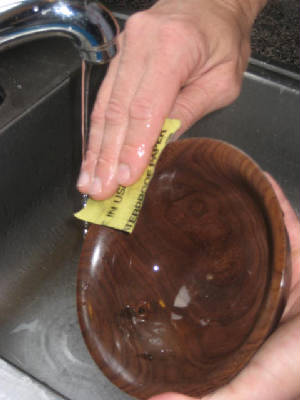For this set of bowls, my customer decided on this design.
From that profile, a cardboard template is made.
At the woodpile, the walnut logs are first cut along the grain
using a chainsaw.
Each half is cut shorter. Then a disk is screwed to the half
log
to act as a sawing template at the bandsaw.
The blank is cut round at the bandsaw (not pictured here).
Then, using a screw chuck (shown above), the rough blank is mounted
on the lathe.
Here the piece has been turned true on the lathe,
and a tenon is formed at the foot, which will be used to hold
the blank in a four-jaw chuck later for hollowing.
The
bowl's rim diameter of 6" is established now too.
Now the outside profile is cut, and I use the cardboard
template as a guide to check my progess.
The outside of the bowl is sanded before the hollowing begins.
When sanding, I run the lathe much slower than when cutting.
This reduces heat build-up and the resultant "heat checking."
Now the bowl is reversed, so that the tenon is grabbed
by the four-jaw chuck and the bowl can be hollowed and sanded.
The bowl, cut to its final thickness and sanded, is set aside for
about a week to dry.
At this thickness, the wood usually does not
crack but will cup as it dries.
It moves unevenly because a single
piece of wood shrinks more across the grain
than it does in its
length (at the end grain). In flat lumber, this cupping
is
considered a defect, but I like it in a bowl. Of course, the cupping,
while interesting at the rim, would also cause the bowl to sit unevenly
if I had removed the tenon and cut the foot before drying. This is why
I cut the foot after the bowl has dried and moved – so it will sit flat.
This is a piece of scrap wood mounted on the screw chuck.
It is used as a jam chuck for turning the foot.
The bowl is mounted over the jam chuck with bubble wrap in between
for protection.
The tailstock is brought up to hold the bowl in
place. Note the tenon is still there.
Here I have cut away the tenon and formed the final foot.
Now the bowls are finished with a gloss alkyd varnish that has
been thinned
50% with mineral spirits to make it easier to wipe
on. Between coats,
I wet sand with 600 grit paper.
This makes the surface very smooth
to the touch and ready for the
next coat.
